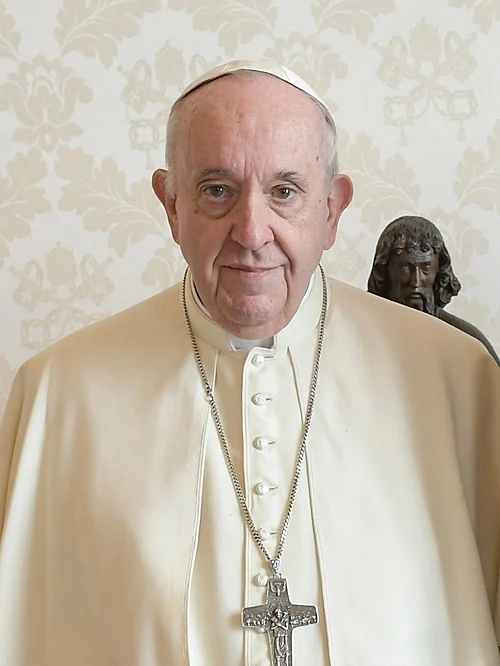“If a tree falls in the forest, does it make a sound if no one is around to hear it?”
The previous LOTRW post noted that nations institute public weather services not just to provide forecasts, but to save lives and property. That national need is met only when weather services work in partnership with emergency managers. Their futures are necessarily intertwined.
Just what is that future? The outlook reveals problems as well as opportunities. This and the next few posts to follow consider both.
Start with emergencies per se. If emergencies themselves were for some reason to decline, the need for emergency management would decrease. But emergencies are likely to increase in number and impact.
A brief aside: this is a matter of reality more than mere nomenclature. Two variations on today’s quote help us see that[1]. The first:
“If no tree falls in the forest, but someone says one did fall, there is indeed a sound.”
In the year 2025, “a state of national emergency” is being used as the legal basis for draconian forms of government action with respect to immigration (framed as invasion) and with respect to tariffs (framed as economic warfare). Here the debate is whether such a state of emergency actually exists.
Meanwhile, natural disasters are driving a separate national conversation in the opposite direction:
“If a tree falls in a forest, but someone says, ‘that didn’t happen,’ then there is no sound.”
Something of this order is going on with respect to presidential disaster declarations dealing with hazards such as flood, drought, storms, earthquakes, volcanic eruptions, wildfires and the like. In 2024, President Biden issued 90 such declarations, almost two a week. But in 2025 inaction has been the order of the day. The federal government is slow-walking or denying requests for assistance, arguing that natural disasters are a state-level problem. (Media coverage of this shift has been extensive; samples can be found in both local– and national news outlets.)
In addition to after-the-fact action, there’s also debate about hazard warnings.
“A tree in the forest is about to fall near you.”
Budget cuts to NOAA and the National Weather Service, to the U.S. Geological Survey and other agencies would appear to compromise pre-existing improvements in the advance notice and accuracy of warnings. Again, the problem exists at both national and local levels.
George Berkeley’s original reflections on falling trees (footnote) have triggered more than a century of relatively calm discussion by scientists and philosophers. By contrast, the two latter debates about national emergencies are being fast-tracked in the courts. In the first case, political stakes are high. In the second, big bills are coming due, raising questions of who pays – the federal or state governments.
Natural disasters and their accompanying emergencies are the focus here. These are on the rise, both in terms of frequency and in terms of cost. Extremes of wind, flood and drought are nature’s way of doing business; they’re not going to lessen. The damage they do is increasing – the result of population growth and greater property exposure, as well as the mounting costs of business disruption. Social decisions – poor land use (allowing populations and economic activity to move into hazardous areas), inadequate building codes, and fragile critical infrastructure – all combine to magnify the risk.
A quick refresher on disasters-versus-emergencies. A disaster is a disruption of an entire community, persisting after the hazard has come and gone, and exceeding the ability of the community to recover on its own. Emergency management usually refers to the actions during the acute phase when the hazard (the hurricane, tornado, wildfire, etc.) is active: (warnings, evacuations, rescue, and other actions to reduce immediate loss). Here and in the next few posts the term will be expanded slightly to include activities sometimes labeled hazard mitigation, as well as other activities associated with risk management more broadly.
Bottom line: disasters and emergencies are both ascendant. The only choice is between effective versus inadequate emergency management, whether by that name, or some other.
Next time: The emergency management community in the United States (the researchers and the practitioners, extending to first responders) is itself experiencing a disaster – a precipitous, haphazard, and seemingly arbitrary withdrawal of multiple forms of support at the federal level. For emergency managers, this community disruption will persist long after the hazard has come and gone, and will exceed the community’s ability to recover on its own. In fact, recovery is an oxymoron. Things will not go back to the way they were. We need to move forward. That set of realities applies to the emergency-management community just as it does to any geographical community such as Asheville or Altadena, or Boulder or New Orleans.
[1]BTW, was surprised just now to discover that the above quote has its own Wikipedia entry. But (shame on me) of course it does! And it’s not simply that there’s a Wikipedia entry for everything. The article lays out the philosophical question about the role of observers, the emergence of the problem in quantum mechanics, and more. Folks give some credit to George Berkeley for originating the discussion (but not so much for the exact quote).

